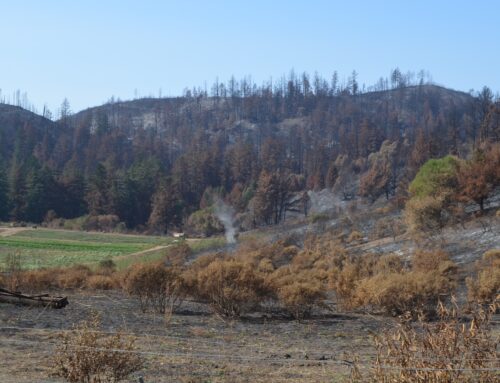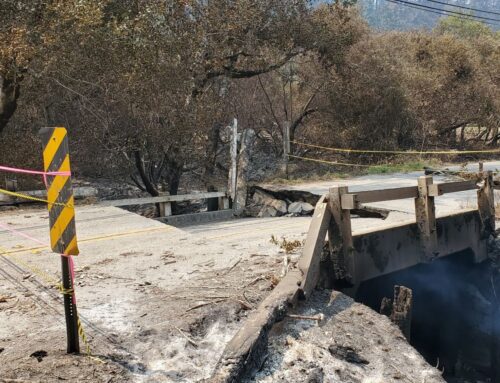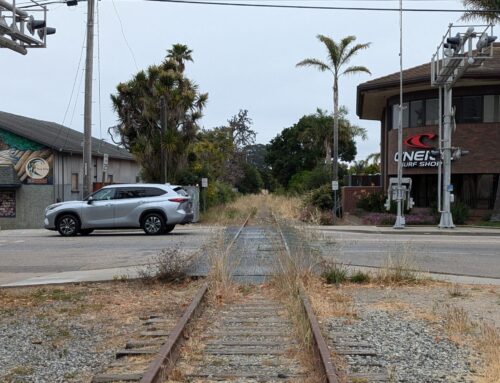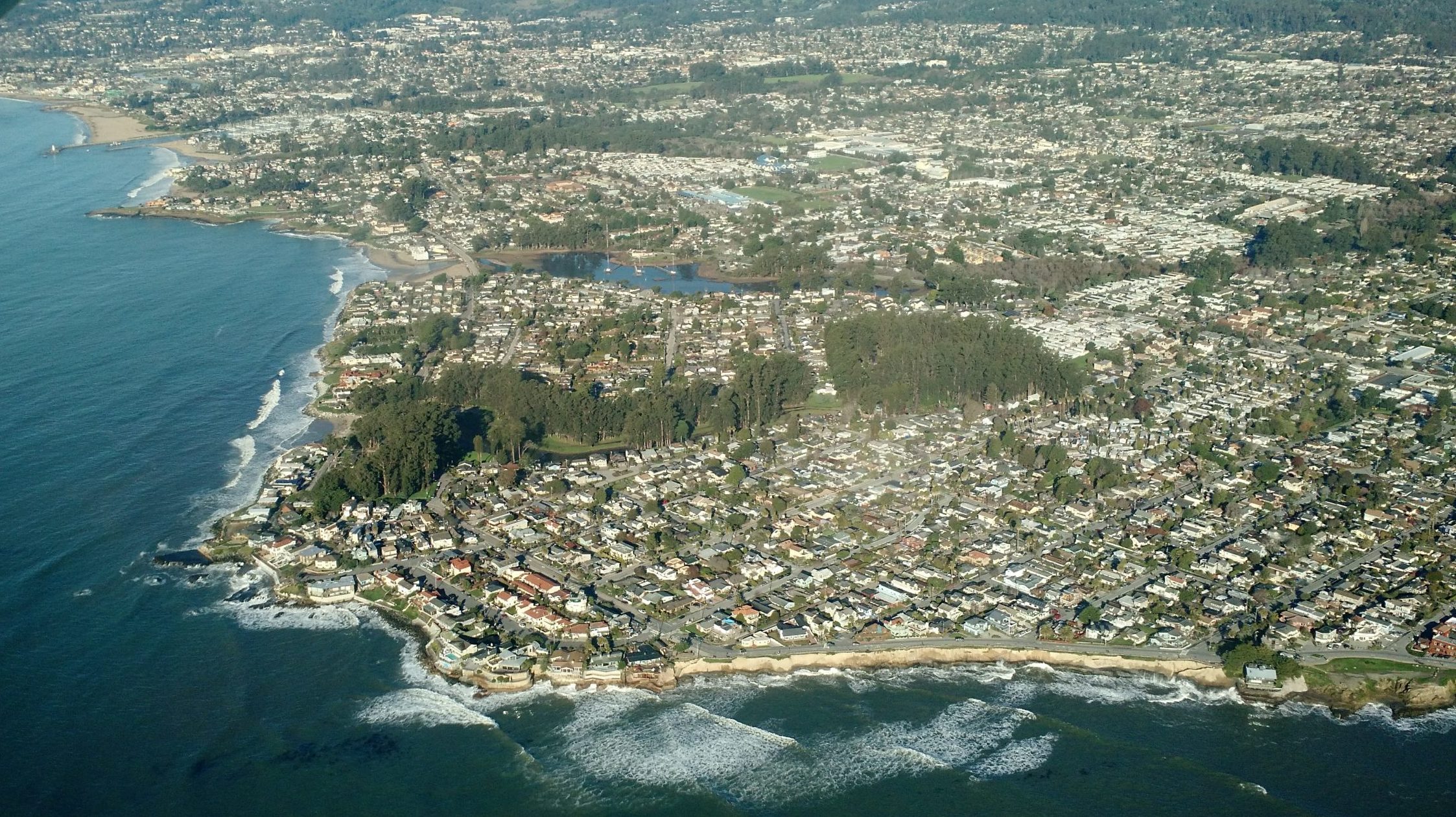
A fishing ban is set to be considered in two areas off the Santa Cruz County coast, including Pleasure Point. (Kara Meyberg Guzman — Santa Cruz Local file, flight courtesy of LightHawk)
SANTA CRUZ >> As kelp forests in some parts of the state transform into barren seafloor, California Department of Fish and Wildlife leaders are set to consider a petition that aims to protect kelp with new no-fishing zones that include Pleasure Point and offshore of Natural Bridges State Beach.
Marine reserve expansions would bolster kelp forests, according to the environmental groups that authored the petition. But some anglers and scientists have questioned the proposal. They said kelp forests on the Santa Cruz County coast are in better shape than other areas of the state, and added that fishing doesn’t hurt local kelp because the ecosystem is different than in some other areas of the state.
The Santa Cruz City Council and the Santa Cruz County Board of Supervisors voted to oppose the petition at separate meetings March 12. State officials said they may not decide on the matter for more than a year.
“The kelp forest is sometimes called the Sequoias of the sea,” said Laura Deehan, state director of Environment California Research and Policy Center. “We think that now is the time for us to be protecting the Sequoias of the sea, much like we did the Sequoias on land 100 years ago.” More than two dozen scientists have signed in support of the petition.
Protected marine areas
California lawmakers created marine protected areas in 1999 to safeguard sensitive ecosystems and prevent overharvesting of fish and shellfish. Protected areas include marine reserves, which prohibit commercial and recreational fishing. Some other kinds of protected areas allow limited fishing.
A marine reserve now bans fishing along the shore from Four Mile to Natural Bridges state beaches.
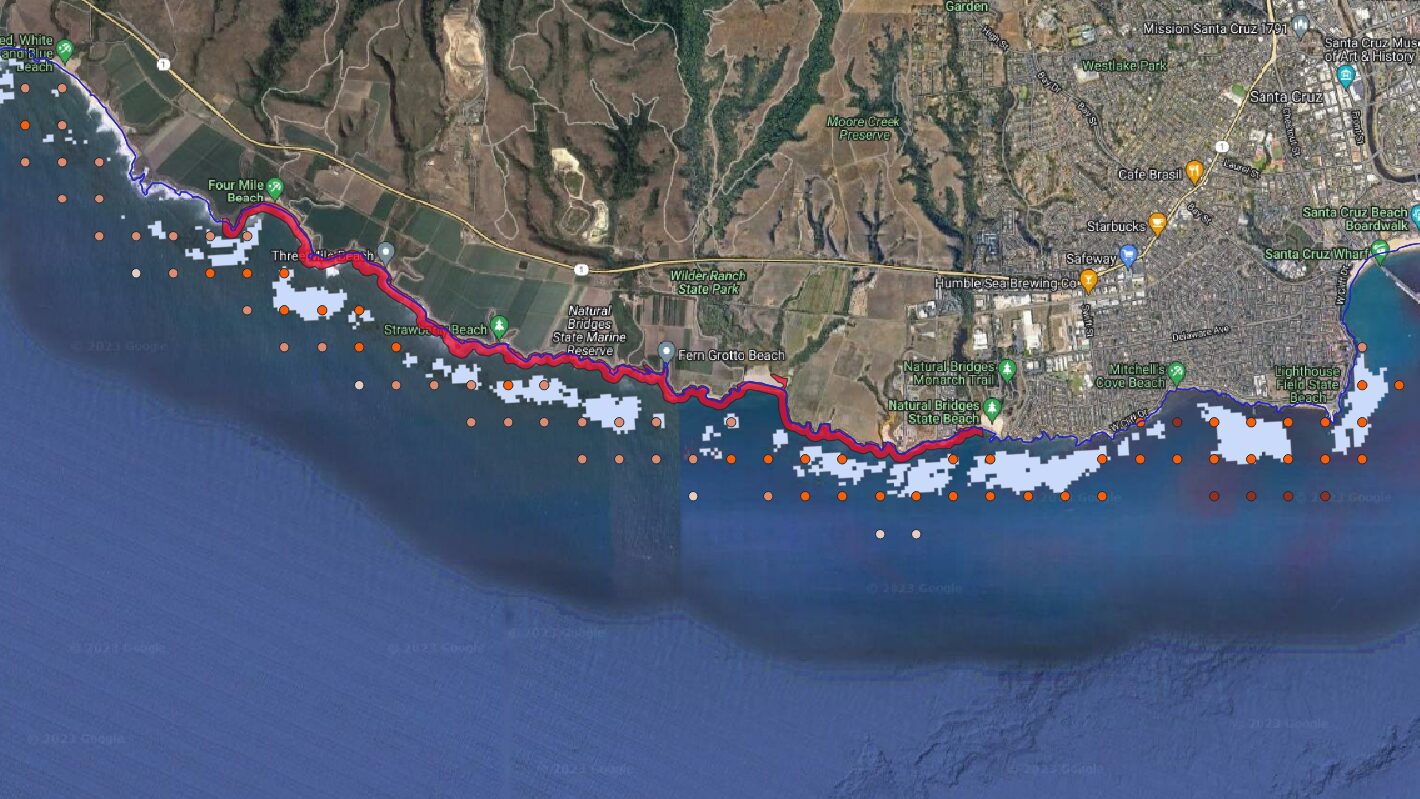
A red line marks the limits of the Natural Bridges Marine Reserve. A petition to the California Fish and Game Commission would extend the reserve about 3.5 miles from shore and create another reserve near Pleasure Point. Resilient kelp beds are marked by light blue pixelation, and sites prioritized for conservation are marked with dots. Darker dots indicate higher-priority sites. (Environment California Research and Policy Center and Azul)
This year, state Fish and Wildlife staff began a process to reconsider the state’s system of protected areas. California lawmakers committed last year to protecting 30% of its land and coastal waters by 2030.
The Fish and Game Commission governs the Department of Fish and Wildlife. The commission has received 20 petitions to expand or change protected areas. One petition, advanced by environmental nonprofits Azul and Environment California Research and Policy Center, would expand state marine reserves to protect more kelp forests.
Health of California kelp forests
Kelp forests in Southern California and north of San Francisco were half the size they were 100 years ago, according to 2014-2016 research by Monterey Bay Aquarium ecologists. However, Central California kelp forests have grown in the past 100 years, the study found. Maps of kelp forests over time indicate that their range varies dramatically from year to year.
The proposed changes aim to protect pockets of kelp forests that are still thriving, including those off the Santa Cruz County coast.
The petition proposes to create a new, 3.2 square mile state marine reserve off Pleasure Point. It would also expand a marine reserve from Four Mile to Natural Bridges state beaches. The Natural Bridges State Marine Reserve covers a narrow strip of coastal water, and essentially only bans fishing from shore. The petition would extend the reserve about 3.5 miles from shore. Both proposed reserves would ban all commercial and recreational fishing.
UC Santa Cruz ecologist Mark Carr completed some of the analyses of how Marine Protected Areas have impacted the Central Coast over the past decade.
Carr said fishing bans might help kelp forests in Southern California, but won’t have the same impact in Monterey Bay. That’s because in Southern California, Sheepshead fish and spiny lobsters eat sea urchins. If those species are overfished, urchins proliferate and eat so much kelp that the underwater forest turns to a barren patch of seafloor.
But sheepshead and spiny lobsters don’t live in Monterey Bay, Carr said. Instead, sea otters are the main urchin predators. And the main threat to kelp forests isn’t fishing, but marine heat waves, like the patch of warm water known as The Blob that appeared off the California coast 2014-2016.
Urchins normally eat blades of kelp that drop to the sea floor, but during the heatwave, the kelp grew more slowly and didn’t shed enough blades to satisfy urchins.
“Without that food being delivered to the urchins, they went nuts” and overgrazed stands of kelp, Carr said. “There has not been strong evidence indicating that (marine protected areas) have protected kelp itself through the marine heatwave.”
Ethan Estess is a marine scientist and a fishing enthusiast who opposes the petition. He’s also a scientific advisor for All Waters Protection and Access Coalition, a group that advocates against the new marine protected areas on behalf of recreational fishers and divers.
“I wouldn’t be saying this if I thought that this was a resource that was overfished or was in any way unhealthy, but anybody who spends time in these kelp forests can see they’re super well managed, so there’s no need for additional, very strict, protected areas that are being proposed,” Estess said. “It’s like they’re kind of trying to come up with a solution to a problem that’s not really a problem.”
A former researcher with the Monterey Bay Aquarium, Estess is now a full-time artist who often uses marine trash for sculptures and other artwork with ecological themes.
Estess is sensitive to the many threats local coastal environments face, he said. But he doesn’t think new fishing bans will help protect kelp. He added that he was “frustrated to see science being used kind of inappropriately to justify this strategy.”
The waters off of Pleasure Point are accessible to anglers on kayaks and paddleboards. Some of them might not be able to fish otherwise, he said. “I don’t think I would have become a marine scientist if I hadn’t had early experiences fishing in the kelp forest,” he said.
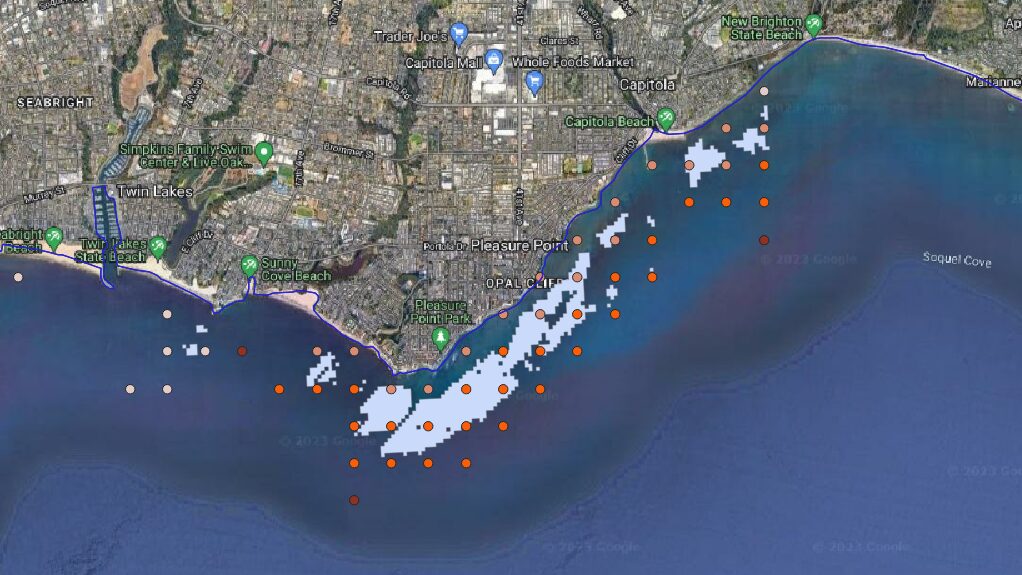
A petition with the California Fish and Game Commission would create a new state marine reserve from Trees Beach in Capitola to near Rockview Drive County Park in Pleasure Point. The proposed reserve would extend 2.5 miles from shore. Resilient kelp beds are marked by light blue pixelation, and sites prioritized for conservation are marked with dots. Darker dots indicate higher-priority sites. (Environment California Research and Policy Center and Azul)
Representatives of Environment California said the expanded reserves would protect large ocean fish. Some scientists who reviewed the petition “have indicated that because of climate change, we’re seeing more of these larger fish come in closer to the shore,” Deehan said.
Marine reserves and large fish
New reserves would “protect these regions before they undergo more dramatic changes,” Deehan said. Multiple studies have indicated that some fish and other species like whales that normally live in deeper waters ventured closer to shore during the marine heatwave.
In a letter in support of the petition, Santa Cruz ecologist Hannahrose Nevins wrote that a state marine reserve would also protect small fish that are important food sources for seabirds. Nevins was formerly the seabird program director for the American Bird Conservancy.
The petition recommends marine reserves that ban fishing entirely. But the state could also consider creating a state marine conservation area to protect Pleasure Point kelp forests, it stated. A conservation area would prohibit commercial fishing, but allow recreational hook-and-line fishing and spearfishing.
The Fish and Game Commission could take more than a year to reach a final decision on the petition. During a March 19 meeting of the Marine Resources Committee of the commission, Fish and Wildlife staff said they would begin designing the process by which petitions will be considered.
Some suggestions are set to be considered beginning in August, but responses to more complex petitions are expected to take longer, staff said. There is no deadline for the commission’s decisions, they said.
At the March 19 Fish and Game Commission meeting, Santa Cruz City Councilmember Sandy Brown spoke on behalf of Santa Cruz County Supervisor Justin Cummings and urged the commission to conduct outreach with California anglers, tribal leaders and scientists.
“We’ve heard a lot from folks in our community and want to make sure that those voices are heard in your process as well,” Brown said.
Questions or comments? Email [email protected]. Santa Cruz Local is supported by members, major donors, sponsors and grants for the general support of our newsroom. Our news judgments are made independently and not on the basis of donor support. Learn more about Santa Cruz Local and how we are funded.
Jesse Kathan is a staff reporter for Santa Cruz Local through the California Local News Fellowship. They hold a master's degree in science communications from UC Santa Cruz.


